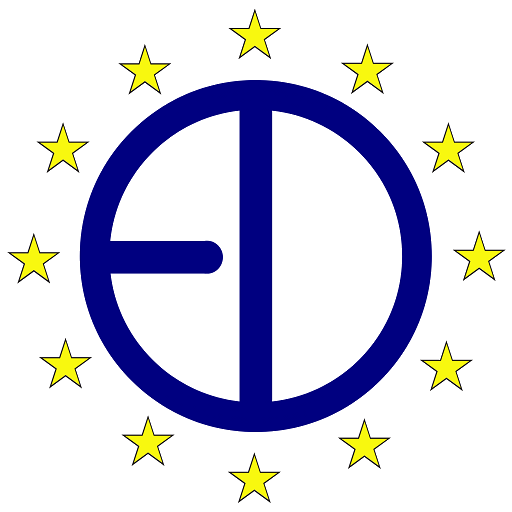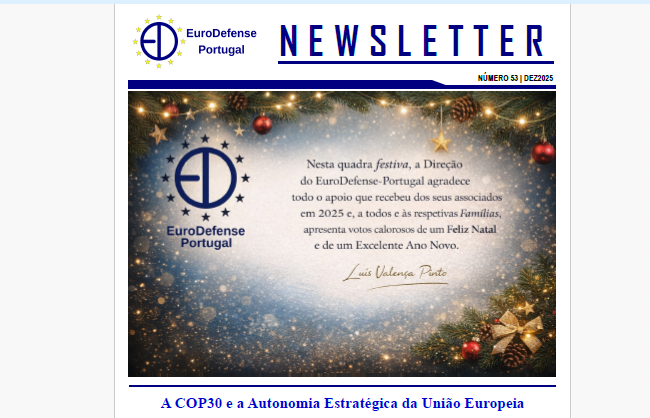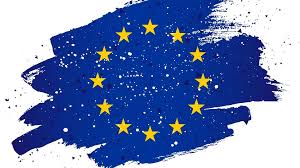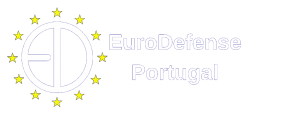No seguimento da Declaração Conjunta EU-NATO (Varsóvia, julho 2016) começam a aparecer programas concretos de intensificação da cooperação EU-NATO, numa demonstração evidente de que existe vontade política para se passar das declarações aos atos. Será mesmo uma vontade real de que estamos mesmo num novo tempo de viragem, ou será apenas apara impressionar a nova Administração Trump?
Eis a versão original do comunicado conjunto (em inglês) e respectivo anexo, divulgado em 6 de dezembro de 2016:
«Statement
On the implementation of the Joint Declaration signed by the President of the European Council, the President of the European Commission, and the Secretary General of the North Atlantic Treaty Organization
Today, more than ever before, the security of Europe and North America is interconnected. NATO and EU face a series of unprecedented security challenges emanating from the South and the East that need to be addressed in a concerted and complementary way that avoids unnecessary duplication. The importance of a strong transatlantic bond, based on our shared values, which enhances our common security and ensures a fair and balanced burden-sharing, becomes even more pertinent in this challenging strategic environment. The overall goal of NATO and EU remains the same: maintain peace and stability and promote security for our citizens.
22 out of 28 Allies are also part of the EU. But nations only have one ‘single set of forces’. In this regard, we welcome closer and mutually reinforcing cooperation between NATO and the EU. Together, the two organisations, unique and essential partners, can mobilize a broad range of tools to respond to these challenges, make a more efficient use of resources and better provide security in Europe and beyond.
Acting on the decisions adopted by our Heads of State and Government at our Summit in Warsaw, while fully preserving the foundation of the cooperation between our two organisations established almost two decades ago, we have decided, as a first step, to strengthen our strategic partnership in concrete areas including countering hybrid threats; operational cooperation including maritime issues; cyber security and defence; defence capabilities; defence industry and research; exercises; and defence and security capacity building.
We thus welcome the efforts by NATO and EU staffs in identifying concrete options for the implementation of the Joint Declaration issued in Warsaw by the NATO Secretary General, the President of the European Council, and the President of the European Commission.
Today, we therefore endorse the common set of proposals attached in annex which were jointly developed by the Secretary General, the High Representative of the Union for Foreign Affairs and Security Policy/Vice-President of the Commission and the European Commission. The implementation of the annexed proposals will be undertaken by NATO in accordance with its decisions and procedures and in a spirit of full mutual openness, transparency, and complementarity, while respecting the organisations’ different mandates, decision-making autonomy and institutional integrity, and as agreed by the two organisations. This will increase the ability of the two organisations to respond to the challenges we currently face, and progress is already under way. These proposals are being endorsed in a parallel process by the EU, through the Council of the European Union.
NATO remains the transatlantic framework for strong collective defence and the essential forum for security consultations and decisions among Allies. A stronger, more capable and better resourced European defence will contribute to a stronger NATO and we welcome the ongoing efforts to develop European defence capabilities.
We underline that non-EU Allies substantially contribute to European security and defence overall, as well as continue to make significant contributions to the EU’s efforts to strengthen its capacities to address common security challenges. For the strategic partnership between NATO and the EU, non-EU Allies’ fullest involvement in these efforts is essential. We encourage further mutual steps in this area to support a strengthened strategic partnership. To this end, reinforced dialogue and consultations on security and defence issues, as appropriate, is important.
We are committed to carry this work forward, emphasizing that reinforcing the strategic partnership between our two organisations will continue to be a priority. We therefore task the Council to review the implementation of the proposals twice-yearly, starting by the time of the 2017 Brussels Summit. We also task the Council to explore options for further enhancing future cooperation in all aspects of the NATO-EU partnership on a yearly basis.
ANNEX
Common set of proposals for the implementation of the Joint Declaration by the President of the European Council, the President of the European Commission and the Secretary General of the North Atlantic Treaty Organization
- Countering hybrid threats
Since spring 2016, EU and NATO are implementing and operationalising parallel procedures and playbooks for EU-NATO interaction in the areas of situational awareness; cyber security; crisis prevention and response and strategic communication.
- Encourage participation by EU and NATO as well as EU Members States and NATO Allies in the work of the “European Centre for Countering Hybrid Threats” to be established in 2017
Situational Awareness
- Concrete measures will be put in place by May 2017 to enhance staff-to-staff sharing of time critical information between the EU Hybrid Fusion Cell and the relevant NATO counterpart including by exchanging the analysis of potential hybrid threats. This will include the establishment of technical means to allow systematic exchange of information relating to hybrid threats
Strategic communication
Cooperation has been established between the EU and NATO staffs with regard to strategic communication. Between now and mid-2017, they will:
- Intensify cooperation and undertake shared trend analysis of misinformation, including through social media targeting the EU and NATO; produce, by the end of 2016, an analysis on the above; cooperate to improve quality and outreach of positive narrative
- Enhance mutually reinforcing efforts regarding support for stratcom capabilities of partner countries including through coordinated or joint trainings and sharing of platforms
- Encourage cooperation between the NATO Strategic Communications Centre of Excellence and the EEAS Stratcom division (specifically task forces East and South) including further joint trainings/seminars
Crisis response
- Enhance preparedness, inter alia, by holding regular meetings at staff-to-staff level
- Bearing in mind the EU’s crisis response procedures, including the Integrated Political Crisis Response arrangements (IPCR) and NATO’s Crisis Response System, seek to synchronize the two organisations’ parallel crisis response activities with the goal of providing coherent support in response to hybrid threats
Bolstering resilience
EU and NATO will raise awareness on existing and planned resilience requirements for the benefit of Member States/Allies. To that end, as of 2017
- Staff contacts will be intensified, including cross-briefings to respective bodies on resilience requirements
- Assess requirements, establish criteria and develop guidelines in the context of greater coherence between the EU Capability Development Plan (CDP) and the NATO Defence Planning Process (NDPP)
- Work to be ready to deploy, by mid-2017 in a parallel and coordinated manner, experts to support EU Member States/Allies, upon request, in enhancing their resilience, either in the pre-crisis phase, or in response to a crisis
- Operational cooperation including maritime issues
- By December 2016, enhance cooperation and coordination between Operation Sea Guardian and EU NAVFOR MED Sophia in the Mediterranean, through information sharing and logistical support and through practical interaction between the two operations
- Building upon synergies between the EU operation and NATO in the Aegean, NATO and EU will study opportunities, in the first semester of 2017, for further maritime cooperation between them
- In support of the above goals, EU and NATO will continue to make full use of the mechanism on Shared Awareness and De-confliction in the Mediterranean (SHADE MED)
- Organize during the first semester of 2017 a lessons learnt seminar building on experience from the fight against piracy in the Indian Ocean, and on the interactions in the Mediterranean
- Compile during the first semester of 2017 an overview of relevant maritime exercises by respective organisations with a view to identifying further opportunities for possible interaction
- Develop further cooperation between NATO and EU staff on aviation in the Western Balkans, including through the Balkans Aviation Normalisation Meetings (BANM) process
- Increase the frequency of meetings with partners participating in respective operations, starting in 2017
- Cyber security and defence
- With immediate effect, EU and NATO will exchange concepts on the integration of cyber defence aspects into planning and conduct of respective missions and operations to foster interoperability in cyber defence requirements and standards
- In order to strengthen cooperation on training, as of 2017, EU and NATO will harmonize training requirements, where applicable, and open respective training courses for mutual staff participation
- Foster Cyber Defence Research and Technology Innovation cooperation by further developing the linkages between EU, NATO and the NATO Cooperative Cyber Defence Centre of Excellence to explore innovation in the area of cyber defence: considering the dual use nature of cyber domain, EU and NATO will enhance interoperability in cyber defence standards by involving industry where relevant
- Strengthen cooperation in cyber exercises through reciprocal staff participation in respective exercises, including in particular Cyber Coalition and Cyber Europe
- Defence capabilities
- Pursue coherence of output between the NATO Defence Planning Process and the EU Capability Development Plan through staff to staff contacts and invitation to EU staff to attend NDPP and PARP screening meetings upon invitations by the individual countries concerned
- Seek to ensure that capabilities developed multinationally by Allies and Member States are available for both NATO and EU operations
- Pursue complementarity of multinational projects/programmes developed within NATO Smart Defence and EU Pooling & Sharing, in areas of common interest, such as air-to-air refuelling, air transport, satellite communications, cyber defence and Remotely Piloted Aircraft Systems, notably through continued and intensified staff-to-staff contacts.
- Further contribute to the coherence of multinational efforts, by reflecting multinational projects developed in an EU context, as relevant, in the capability roadmaps supporting NATO defence planning priorities, and by taking into account multinational projects developed in a NATO context in deriving Priority Actions in the framework of the EU’s Capability Development Plan
- Continue closer cooperation between NATO and EU/EDA experts in the field of Military Aviation with a view to ensuring complementary efforts in the interest of defence and security in Europe especially as regards the development of a Military Aviation Strategy, the implementation of Military Airworthiness arrangements, Remotely Piloted Aircraft Systems Air Traffic Integration, Aviation security including cyber, as well as civil initiatives, such as SES/SESAR
- Enhance interoperability through increased interaction on standardisation. With the aim to avoid duplication in the development of standards, identify projects where standardisation-related activities could be harmonised.
- Defence industry and research
- Further develop a dialogue between EU and NATO staff on industrial aspects using existing fora
- Enhance cooperation at staff level on defence-related R&T in common areas of interest
- Exercises
- Implement parallel and coordinated exercises (PACE) as a pilot project for 2017 and 2018. This will be done with NATO in the lead through the Crisis Management Exercise 2017 (CMX 17) and the EU in the lead through Multi-Layer Crisis Management Exercise 2018 (ML 18) or other types of exercises in 2018. The exercises will include a hybrid element
- NATO or EU staff experts of the non-leading organization for the respective years to be invited to contribute to the planning and conduct of the leading organization’s exercise, in a spirit of reciprocity
- Lessons and recommendations to be shared to the extent possible
- Organise staff to staff exercises in 2017 to test the key modalities already defined in the respective Playbooks/Operational Protocols
- Complement training and education inter alia through invitations to each other’s staff to appropriate events (e.g. workshops, presentations, exercises)
- NATO will, as of 2017, continue to invite the EU (EEAS and European Commission) to participate in observing its military exercises. The EU will reciprocate accordingly
- Defence and security capacity-building
- NATO and EU staffs will foster cooperation, including on the ground, on building partners’ capacity and resilience, in particular in the Western Balkans, the Eastern and Southern Neighbourhoods, including Georgia, Republic of Moldova, Ukraine, Jordan, Morocco and Tunisia
- Encourage cooperation and exchange of expertise through respective Centres of Excellence and other relevant training activities and programmes in support of partners
- Identify possibilities for EU and NATO to participate in their respective projects and practical partnership programmes
- Ensure complementarity of maritime capacity building efforts
Strengthening political dialogue between EU and NATO
- Continue regular formal and informal PSC-NAC meetings
- Further pursue in a balanced manner the practice of mutual invitations to relevant ministerial meetings
- Strengthen cross briefings to respective Committees and Councils, including on operations
Follow-on/Staff to staff cooperation
Since July 2016, the EU and NATO have significantly strengthened staff to staff interaction by means of regular meetings, at various levels, including on the preparation of the present set of proposals. Contact-points have been established both in the EU and NATO to ensure smooth communication and better cooperation. This staff-to-staff interaction will continue at regular intervals in order to monitor the implementation of the proposals above, build on those and suggest new directions for progress and report to respective Councils on an annual basis.»

Augusto Melo Correia
Vice-Presidente da Direcção







